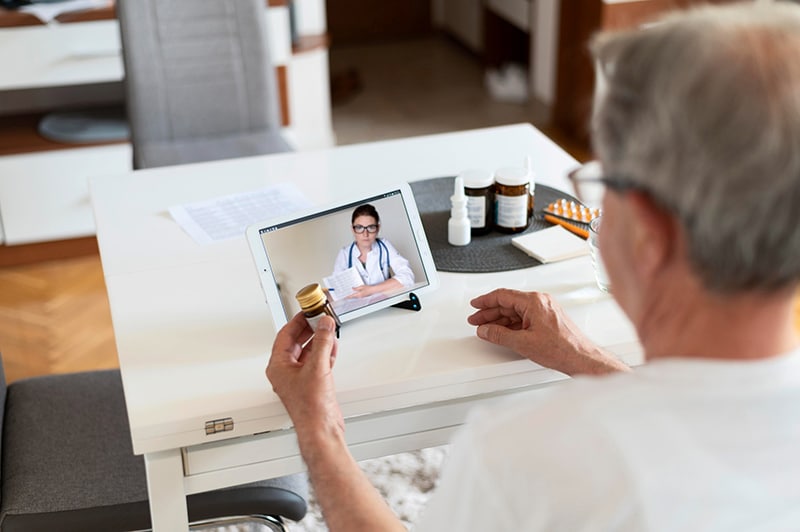
The rapid expansion of telehealth during the pandemic allowed many patients to access healthcare safely, regardless of time or distance. In April 2020, use of telehealth for office visits and outpatient care was 78 times higher than in February 2020, according to McKinsey. Outsourcing medical transcription allows clinicians access to current, accurate information about telehealth encounters. Now that lockdowns have been lifted, patients are returning to in-office visits, but reports indicate that people will continue to use telehealth going forward. As virtual visits are here to stay, healthcare organizations need to consider how they can use telehealth to improve health outcomes and safety. Here are – effective ways to optimize telehealth:
- Integrate EHR with telehealth platform: Patient information needs to pass easily from the telehealth platform to the EHR. This is important to avoid duplicate data entries and improve clinical workflows and care delivery. Notes taken during the telehealth visit should go into the patient’s health record. In addition to easing flow of information, integrating the EHR system with the telehealth platform reduces risks of error when updating a patient’s records, improves patient outcomes, and simplifies the billing process.
- Optimize telehealth use: Telehealth has specific uses and benefits certain patient populations. According to a commentary on an AHRQ Evidence Report, experts support the use of telehealth for:
- Remote, home monitoring for patients with chronic conditions, such as chronic obstructive pulmonary disease and congestive heart failure
- Communicating with and counseling patients with chronic conditions
- Providing psychotherapy as part of behavioral health
Even before the COVID-19, telehealth was found to benefit specific patients, and can improve critical care, speed emergency care decisions, and replace many face-to-face care interactions. During the pandemic, this offered added benefits of reducing exposure to infection.
- Address challenges associated with access to care: A Medusind survey found that the biggest challenge for physicians was getting patients to use telemedicine, resulting in a barrier to access to care (www.mhalthintelligence.com). The main problems were identified as getting older patients to use telehealth technology, patients’ challenges with technology, and patients’ technology issues. To address these problems, practices can assess which populations would benefit the most from virtual visits and are at ease when using the technology. To see more patients in a day, they can consider strategies such as:
- Providing a virtual follow-up to appointments for pre-qualified patients
- Providing an in-person follow-up for other patients
- Scheduling more virtual visits to make more time for in-patient visits
Using telehealth for post-op appointments allows patients to recover at home more comfortably.
- Leverage team-based care: Today, medicine uses a physician-led team-based care approach. The American Medical Association (AMA) points out that the same team-based approach needs to be applied to telemedicine. The AMA’s toolkit lists 5 steps to optimize team-based care in telehealth:
- Identify and include the right people in the team: physicians, nurse practitioners, information technology (IT) partners, medical assistants and others.
- Choose a suitable approach – ‘synchronous’ or ‘asynchronous’. With synchronous support, clinical team member is present with the physician and patient during the entire visit (physically or virtually). In asynchronous support, the clinical team member helps with pre-visit planning and virtual rooming, but is not present during the visit. The AMA recommends allowing the patient to choose the visit type.
- Create detailed team-based care workflows adapted to telemedicine.
- Set a realistic timeline and have pilot teams implement workflows.
- Have regular team meetings to review work and make improvements.
One of the most important things when it comes to getting the most out of telehealth is to help patients gain familiarity with the technology and establish expectations. Technical support should be available real-time and there should be a ready backup plan to reach the patient in the event of technology failures. Practices implementing telehealth should also have measures in place to safeguard their patients and practice from liability and privacy concerns.
Integrating telehealth platforms with their existing systems like EHRs eases the clinician experience. Physicians, nurses and other healthcare providers should maintain proper documentation in their systems. Partnering with a US based medical transcription company can ensure comprehensive documentation that includes all information pertinent to the in-person consultation, such as initial and present complaints, review of systems, past history, relevant family and social history, allergies, medications, physical examination and test results, and assessment and plan.


